Daimajin (1966 film)
7.2 /10 1 Votes
Director Kimiyoshi Yasuda Sequel Daimajin Ikaru Writer Tetsuro Yoshida Language Japanese | 7/10 IMDb Genre Drama, Fantasy, Horror Music director Akira Ifukube Duration Country Japan | |||||||||||||||||||||||||||||||||
 | ||||||||||||||||||||||||||||||||||
Cast Miwa Takada (Kozasa Hanabusa), Riki Hashimoto (Majin), Yoshihiko Aoyama (Tadafumi Hanabusa), Jun Fujimaki (Kogenta), Ryûtarô Gomi (Samanosuke), Ryûzô Shimada (Tadakiyo Hanabusa)Release date 1966 Similar movies Godzilla , The Return of Godzilla , Godzilla: Final Wars , Mothra vs. Godzilla , Ghidrah, the Three-Headed Monster , Godzilla's Revenge | ||||||||||||||||||||||||||||||||||
Similar Movies
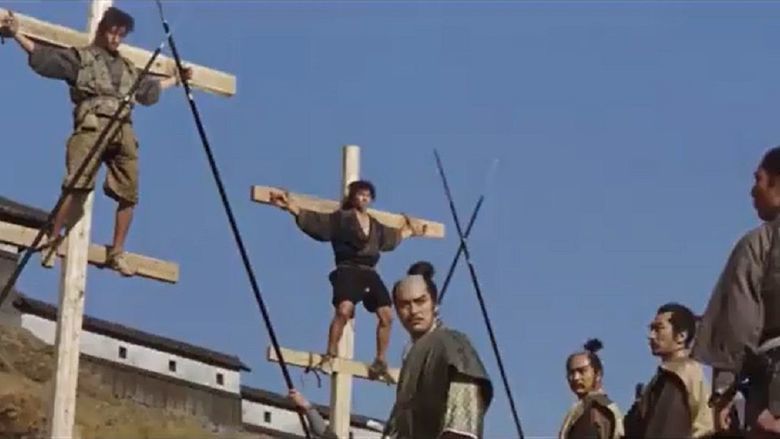
Yokai Monsters: Vol 1: Spook Warfare (1968). Masaichi Nagata produced Daimajin and Ugetsu. The Magic Serpent (1966). Masaichi Nagata produced Daimajin and Warning from Space. Masaichi Nagata produced Daimajin and Gamera.
Contents
Daimajin 1966 kaiju film review
Daimajin is a 1966 Japanese film of the Daimajin series directed by Kimiyoshi Yasuda. Its musical score is composed by Akira Ifukube. The film had a brief stateside theatrical release in 1968. Reportedly, it was shown both in Japanese with English subtitles and dubbed into English. The English dubbed version was later released directly to TV by American International Television under the title Majin the Monster of Terror.
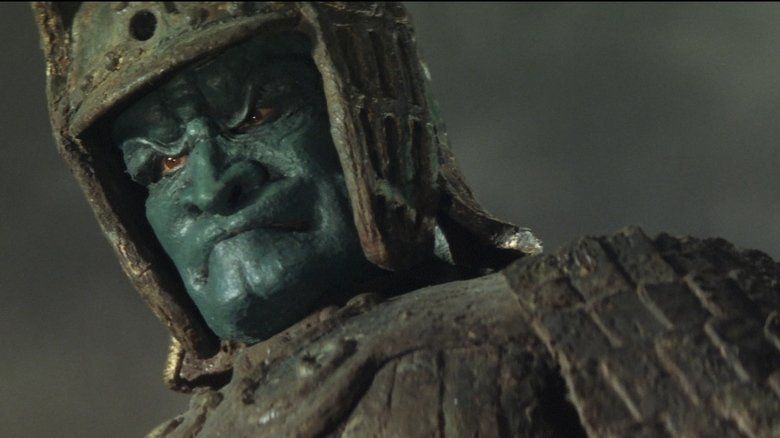
Plot
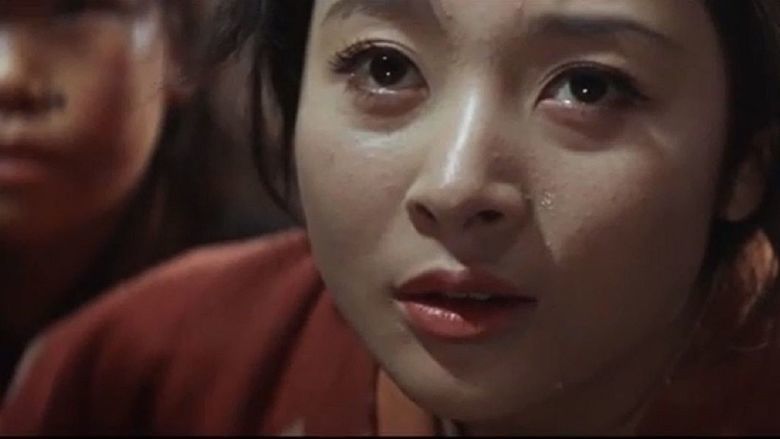
The movie opens with a household of peasants cowering during a series of earth tremors that are interpreted as the escape attempts of Daimajin, a spirit trapped within the mountain. The village gathers at their shrine. This is observed by the local feudal boss, Lord Hanabasa, a good and just man. It is also observed by his treacherous chamberlain, Samanosuke (Yutaro Gomi). Samanosuke has been waiting for just such a diversion to stage a coup d'état.
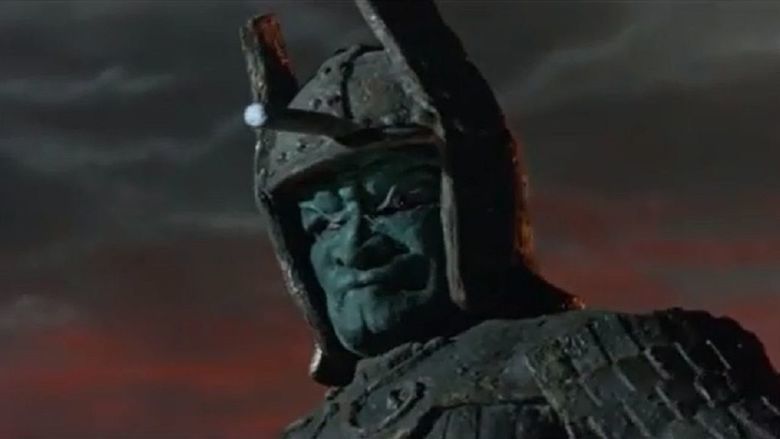
As the villagers pray, Samanosuke and his henchmen slaughter Hanabasa and his wife, but their son and daughter escape, aided by the heroic samurai Kogenta (Jun Fujimaki). Back at the shrine, Samanosuke's men break up the meeting, forbidding all such gatherings in the future. The priestess issues a dire warning, but the men ignore her.

Discouraged, the priestess, Shinobu, goes home, only to find Kogenta and the two children. She takes them up the side of the mountain, into forbidden territory, where the stone idol which is Daimajin stands, half-buried into the side of the mountain. Near this idol is an ancient temple - safe as only Shinobu knows of its existence.
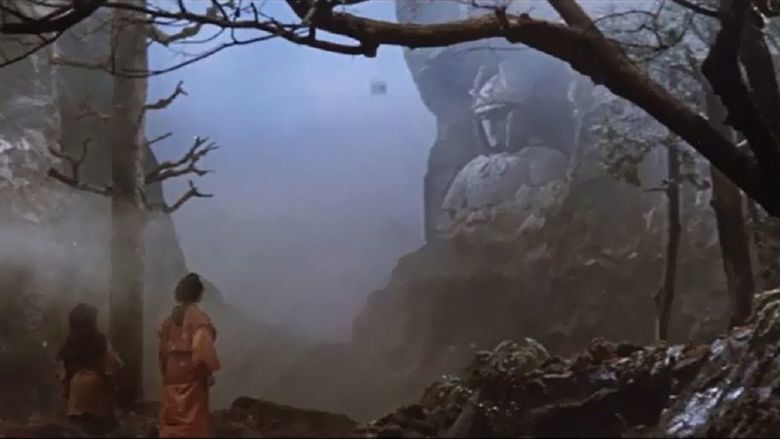
The children grow to adulthood. The son, Tadafumi (Yoshihiko Aoyama) reaches his 18th birthday. The years have been miserable on the villagers. Samanosuke is a brutal leader (in one scene, he gouges out an old woman's eye with a red-hot iron hook) who is using every man in the starving village as slave labor. The place is ripe for revolution, and surviving Hanabasa retainers are starting to return.
Kogenta journeys to the village to try to gather the old retainers, but gets himself captured. A boy gets word to Tadafumi and his sister, Kozasa (Miwa Takada) that their friend is a prisoner. Tadafumi tries to rescue him, only to discover it's a trap. With both awaiting execution, Shinobu tries to talk to the tyrant, who is drinking too much and becomes incensed at all this talk of the god of the mountain; he murders the priestess and orders the idol demolished.
The crew that travels up the mountain to smash Daimajin accidentally discovers Kozasa, and force her to take them to the idol. The soldiers bring out an enormous chisel and proceed to hammer it into Majin's head; they stop when they see blood beginning to drip from the statue. Horrified, the men attempt to flee, but the earth cracks open and swallows them.
Kozasa begs Daimajin to save her brother and punish the wicked Samanosuke. At the fortress, Tadafumi and Kogenta are tied to large crosses, awaiting their fates. Kozasa offers her life to Daimajin and attempts to throw herself over the nearby waterfall, but the rock and earth covering the lower half of the idol fall away, and it walks out into the clearing. Kozasa prostrates herself before it, as the stone mask disappears, revealing the true face of the Daimajin, a vengeful spirit resembling that of a grotesque shogun.
Daimajin goes to Samonosuke's stronghold, which he destroys. After impaling Samanosuke with the chisel from his forehead, Daimajin now turns its wrath upon everyone in sight. Only Kozasa, once more offering her life and letting her teardrops fall on his stone feet, stops its rampage. The spirit leaves the statue, flying away. It collapses into a heap of rubble.
Production
The cinematographer on Daimajin is sometimes credited to Yoshiyuki Kuroda and sometimes to Fujio Morita.
Release
Daimajin was released theatrically in Japan on April 17, 1966.
The film was released simultaneously in the United States with English subtitles by Daiei International Films and in an English-language dub by Bernard Lewis.
References
Daimajin (1966 film) WikipediaDaimajin (1966 film) IMDb Daimajin (1966 film) themoviedb.org
